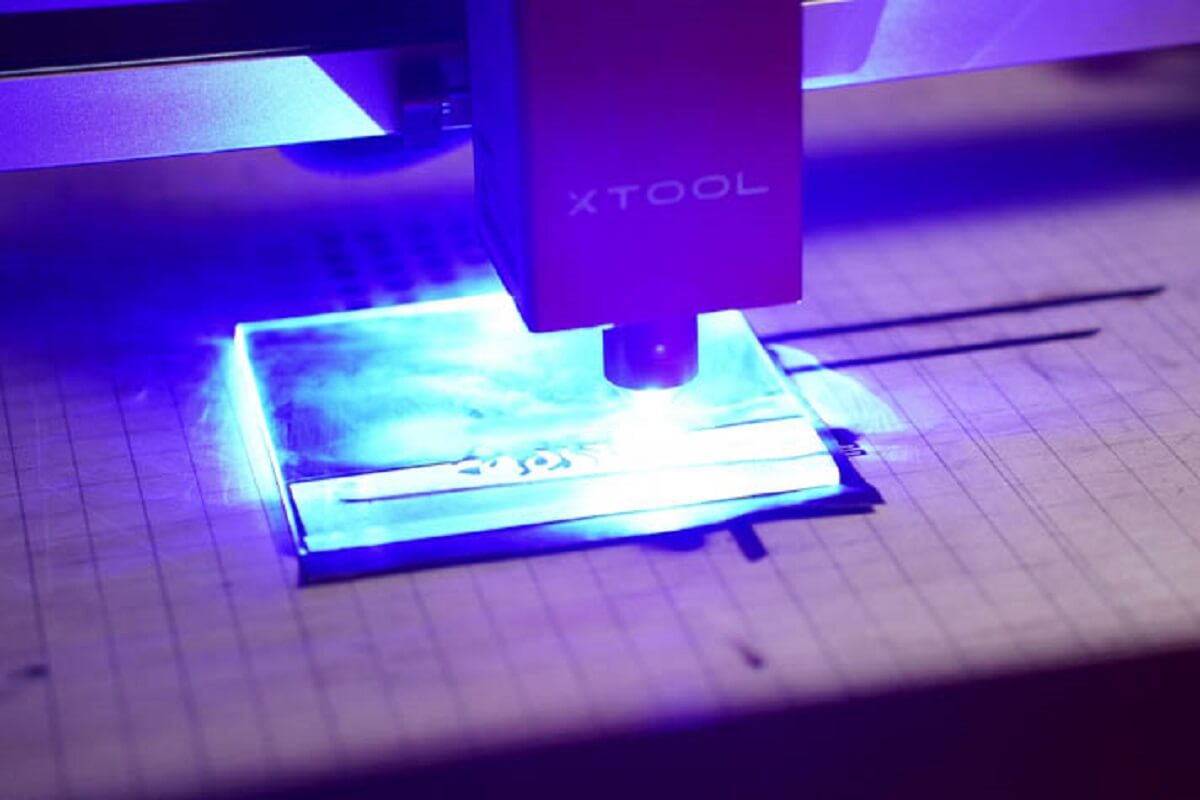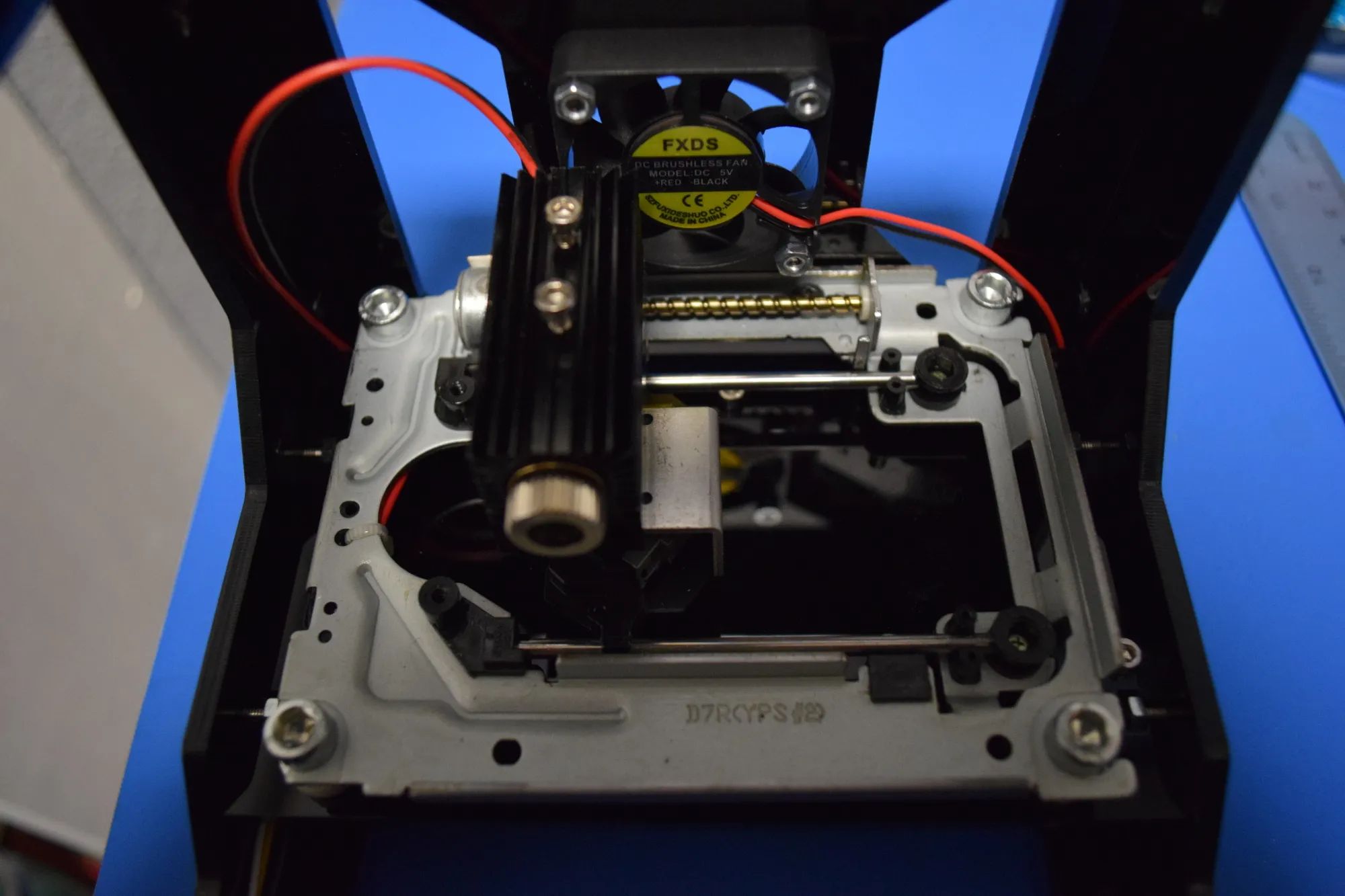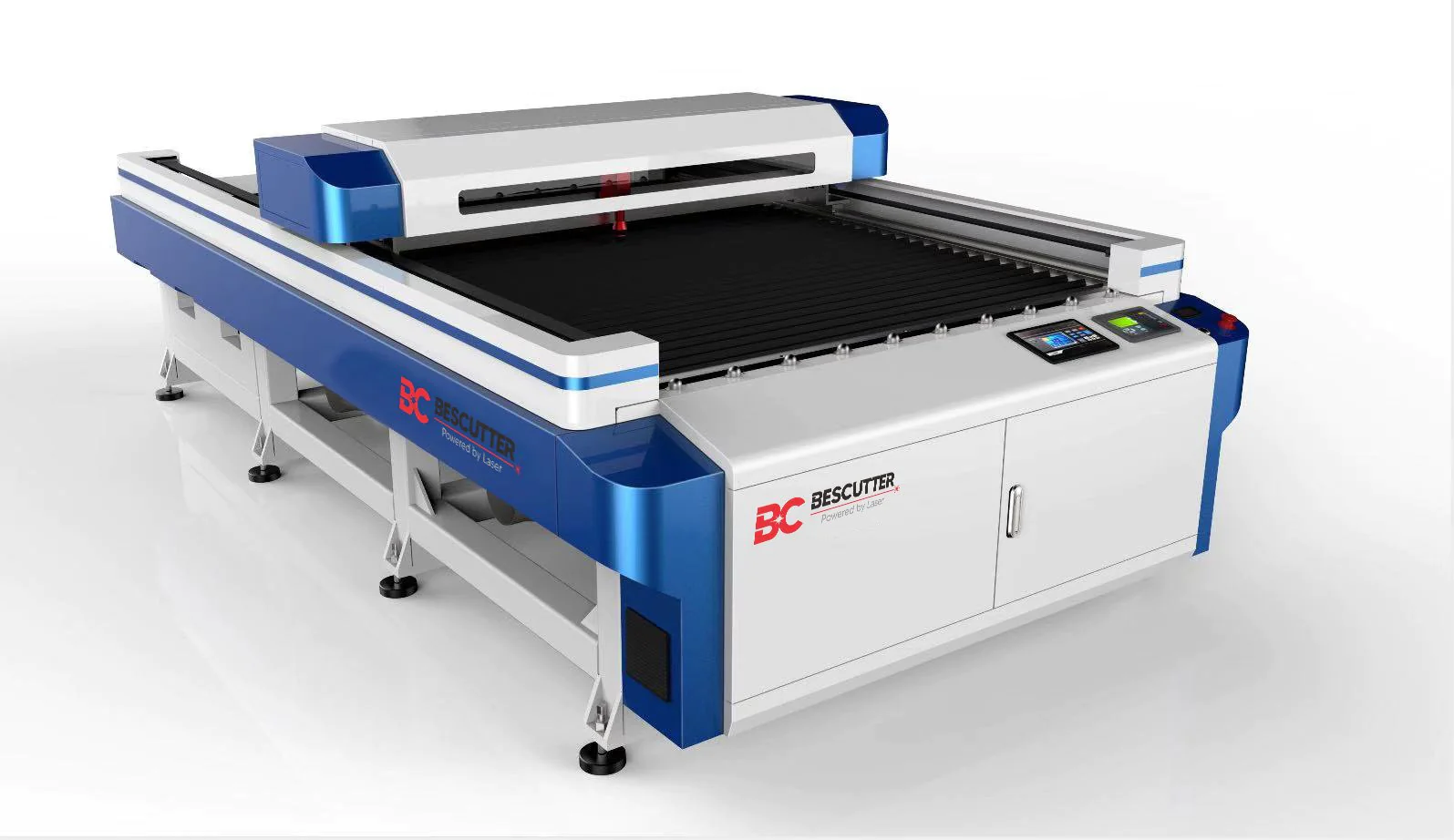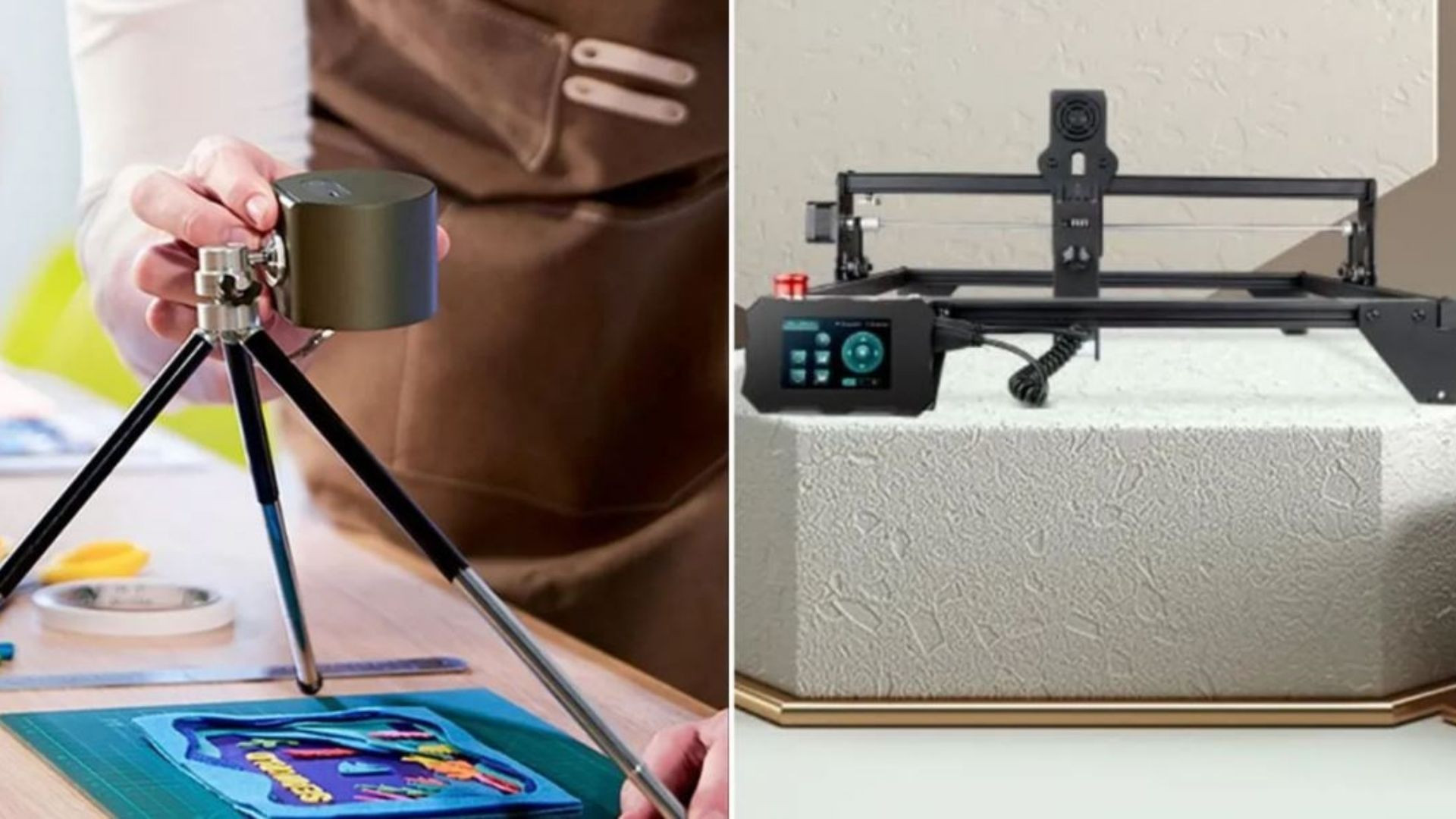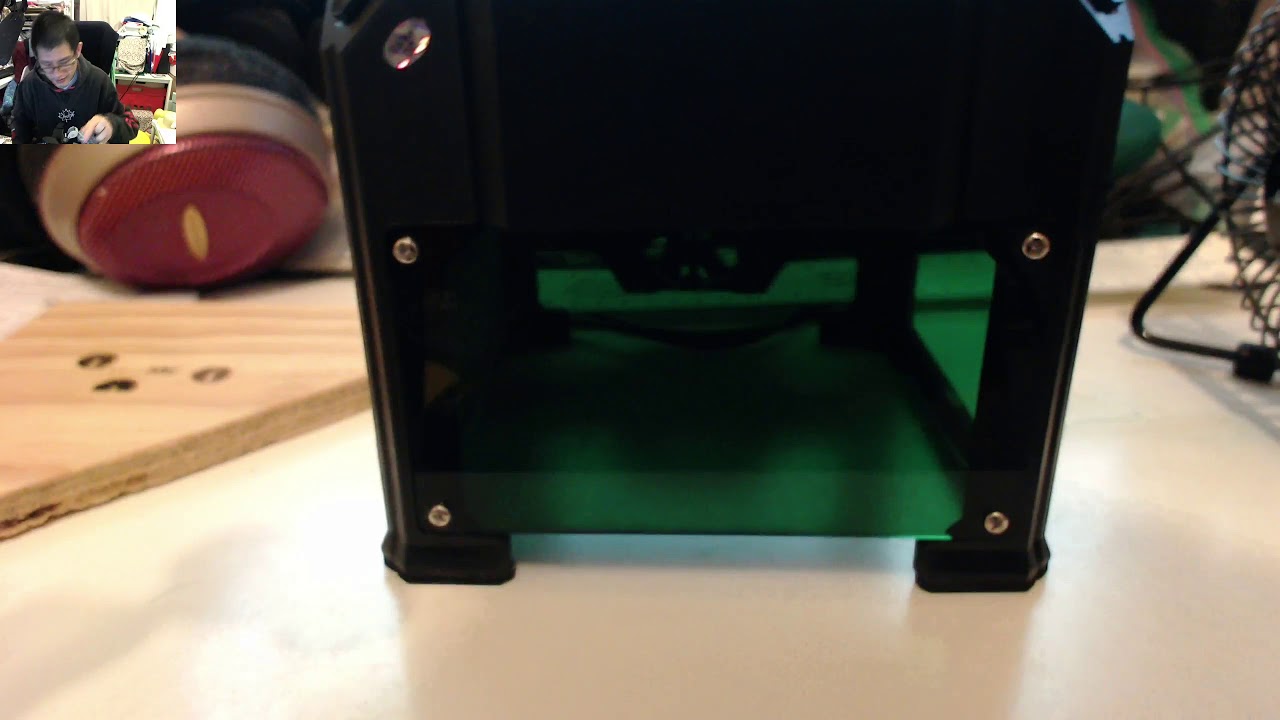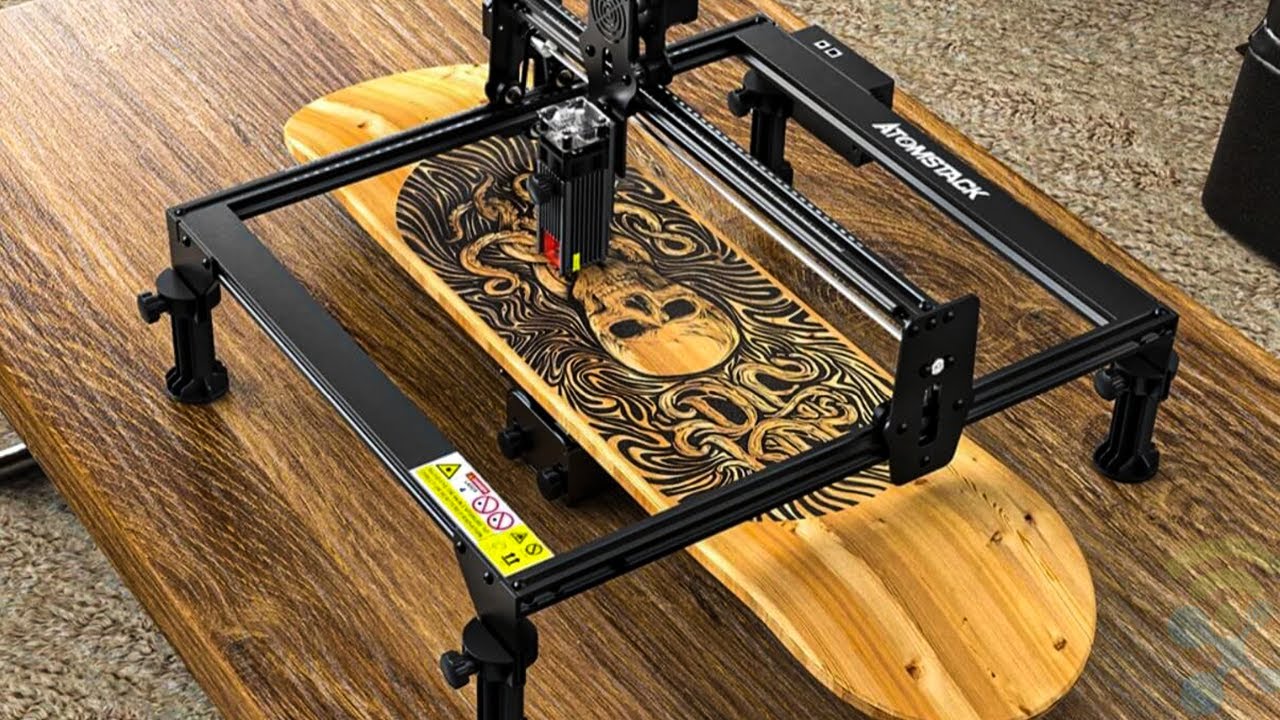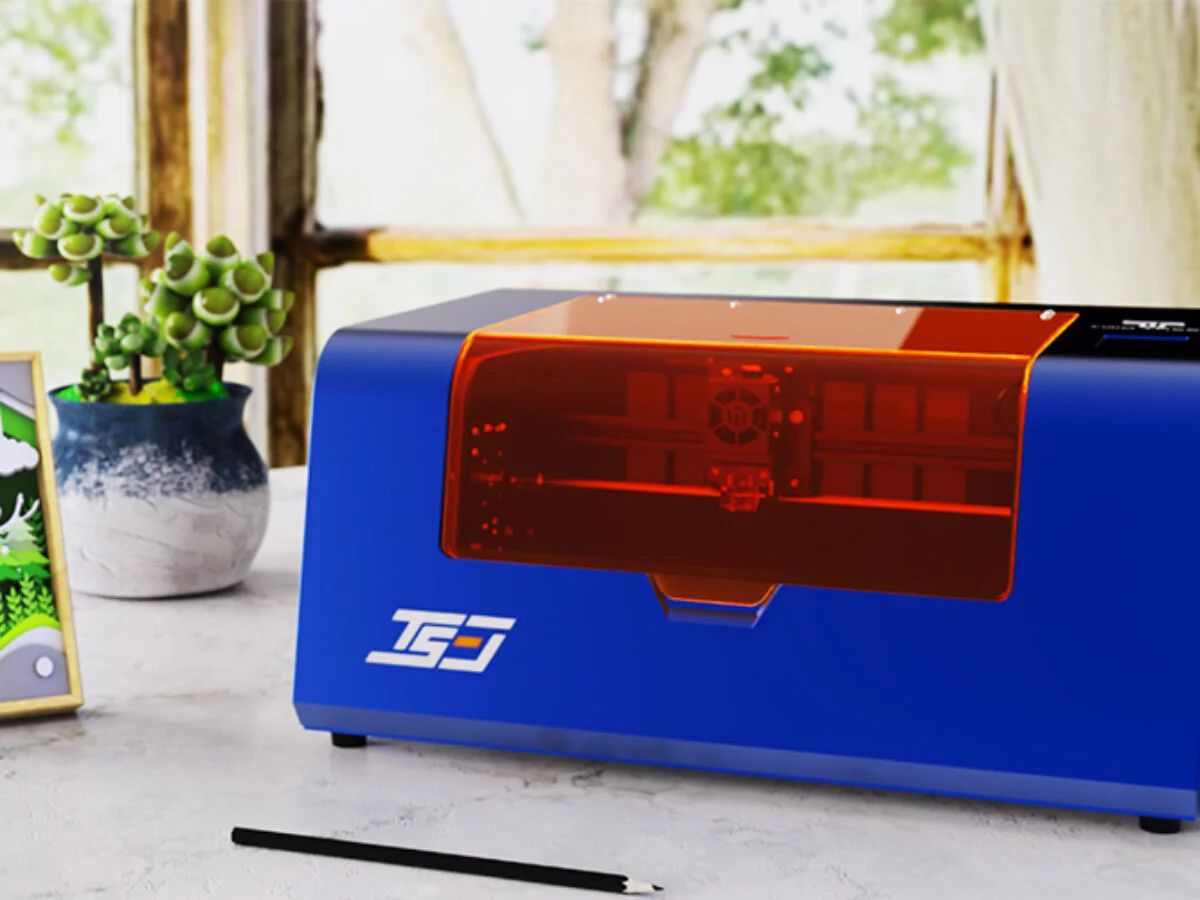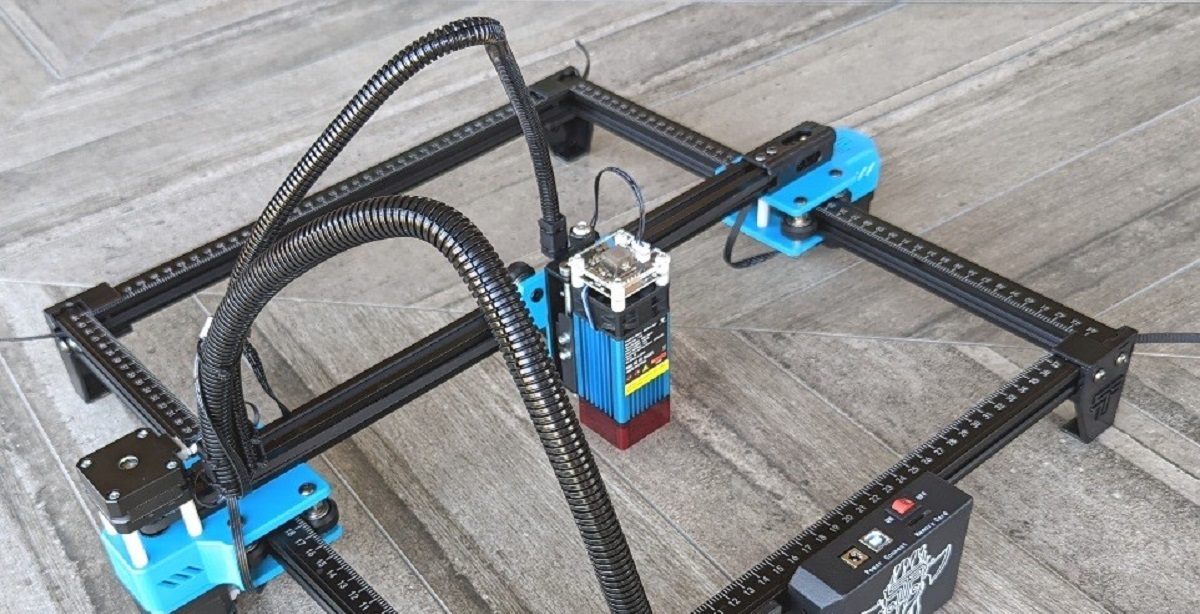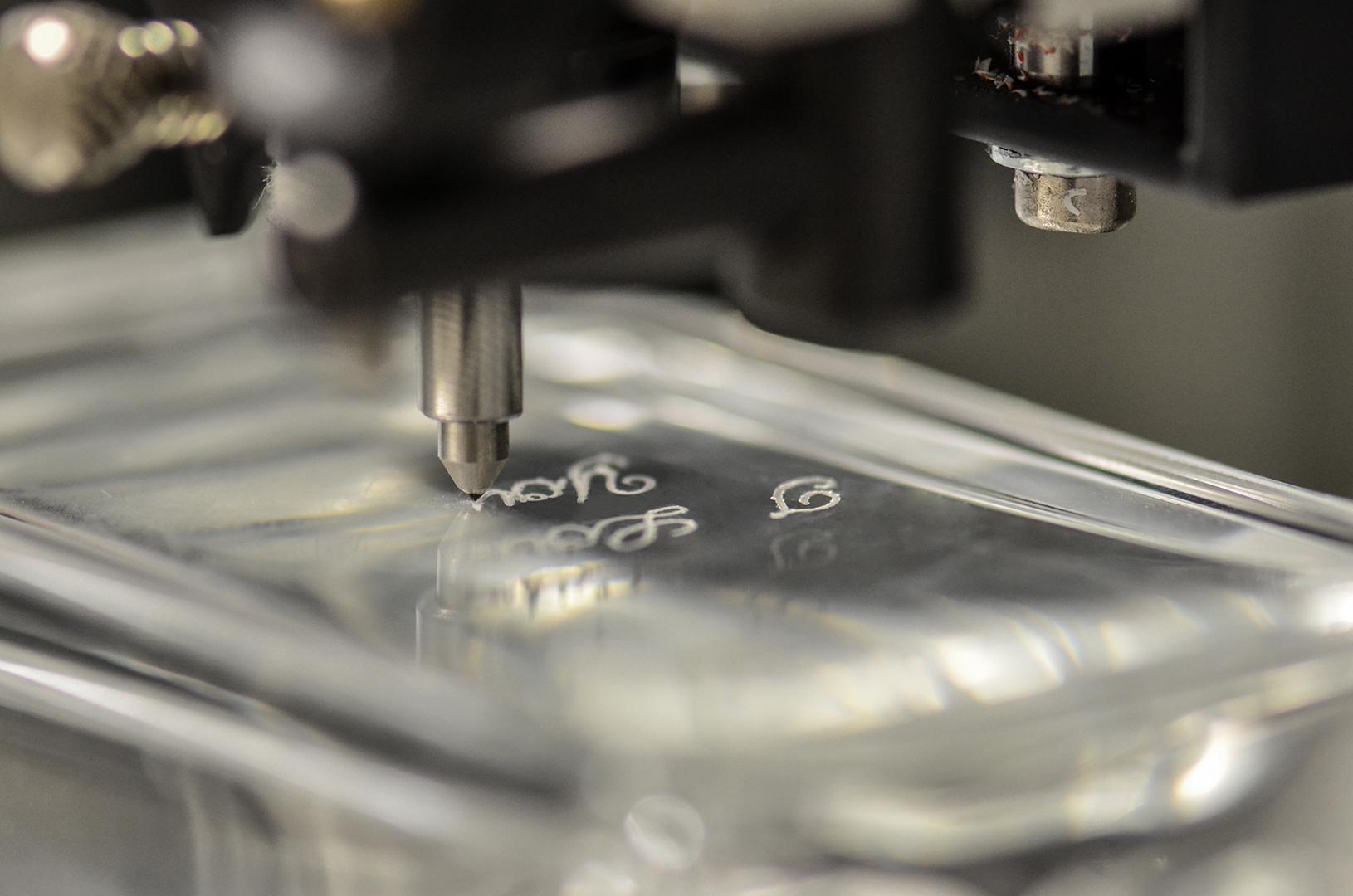Introduction
Laser engraving is a versatile and high-precision method of etching designs, patterns, or text onto a variety of materials including metal, wood, plastic, and even glass. It offers a clean and permanent solution for personalization, branding, and creating intricate artwork. While laser engraving is commonly used on various materials, glass engraving presents a unique set of challenges and opportunities.
Glass is a brittle and delicate material that requires a specific type of laser engraver to achieve optimal results. Whether you’re looking to engrave intricate designs on glassware, personalize glass gifts, or create stunning glass art, understanding the different types of laser engravers suitable for glass engraving is essential.
In this article, we will explore the different types of laser engravers commonly used for glass engraving, including CO2 laser engravers, fiber laser engravers, diode-pumped solid-state (DPSS) laser engravers, and ytterbium fiber laser engravers. We will discuss the benefits and limitations of each type and provide tips for successful glass engraving using a laser.
Whether you’re a professional engraver or a hobbyist, this article will equip you with the knowledge you need to choose the right laser engraver for your glass engraving projects and achieve stunning results.
Laser Engraving on Glass: An Overview
Laser engraving on glass opens up a world of possibilities for creating personalized and unique items. From wine glasses and vases to mirrors and decorative panels, glass engraving adds a touch of elegance and sophistication to any object. The laser engraving process involves using high-powered lasers to etch or engrave designs onto the surface of the glass, leaving a permanent mark.
One of the key advantages of laser engraving on glass is the precision and detail it offers. Laser technology allows for incredibly intricate designs to be etched onto the surface of the glass, capturing even the finest details with exceptional accuracy. This makes it ideal for creating custom logos, text, or delicate patterns.
Another benefit of laser engraving is its versatility. Laser engravers can create various effects on glass, such as frosted or textured surfaces, deep engravings, or even 3D engravings. By adjusting the laser settings, engravers have control over the depth, intensity, and speed of the laser, enabling them to achieve the desired effect for each project.
When compared to traditional engraving methods, laser engraving on glass also offers several advantages. It is a non-contact process, meaning there is no direct contact between the laser and the glass surface. This reduces the risk of damage or breakage, making it suitable for fragile or thin glass items. Additionally, laser engraving is a swift and efficient process, allowing for quick production and turnaround times.
While laser engraving on glass presents numerous opportunities, it does come with some limitations. The transparency of glass can affect the visibility of the engraved design, especially when using certain laser types or engraving techniques. It’s important to consider the type of glass being engraved and adjust the laser settings accordingly to achieve the desired visibility and contrast.
In the following sections, we will explore the specific types of laser engravers that are commonly used for glass engraving, along with their benefits, limitations, and tips for successful engraving. So, let’s dive in and discover the possibilities of laser engraving on glass.
Factors to Consider Before Engraving Glass with a Laser
Before embarking on a glass engraving project with a laser, there are several important factors to consider that can greatly impact the success and quality of the engraving. Taking the time to assess these factors will help ensure that your project turns out the way you envision it. Here are some key considerations:
1. Type of Glass: Different types of glass react differently to laser engraving. Some types, such as borosilicate glass or crystal, are more suitable for engraving due to their composition and transparency. It’s important to test different types of glass to determine which yields the best results for your specific project.
2. Glass Thickness: The thickness of the glass can also affect the outcome of the engraving. Thicker glass generally requires more laser power to achieve a desired depth, while thinner glass may require lower power settings to prevent breakage or cracking. It’s crucial to adjust the laser settings accordingly to ensure the best engraving results.
3. Design Complexity: The complexity of the design or pattern you want to engrave plays a role in determining the laser engraving technique and equipment needed. Intricate designs may require a high-powered laser and specialized software to accurately transfer the design onto the glass surface. Simple designs, on the other hand, may be achievable with a standard laser engraver.
4. Laser Power and Settings: The power and settings of the laser engraver significantly impact the engraving outcome. Determining the appropriate power level and speed for your specific glass type and design is crucial to achieve the desired results. It’s recommended to conduct test engravings on scrap pieces of glass to fine-tune the settings before working on the actual project.
5. Safety Precautions: Laser engraving involves high-powered lasers, so it’s essential to prioritize safety during the process. Wear appropriate protective gear, such as safety glasses, and ensure the engraving area is well-ventilated. Follow the manufacturer’s guidelines and instructions for the laser engraver to minimize the risk of accidents or injuries.
6. Finishing and Cleaning: Consider how the engraved glass will be finished and cleaned after the engraving process. Depending on the specific requirements, additional steps such as polishing or applying protective coatings may be necessary to enhance the appearance and durability of the engraving.
By considering these factors before starting your glass engraving project, you can ensure that you select the right materials, adjust the laser settings appropriately, and take the necessary safety measures. This will help you achieve precise and beautiful engravings on glass, whether you are creating personalized gifts, decorative pieces, or artistic masterpieces.
CO2 Laser Engravers for Glass Engraving
CO2 laser engravers are commonly used for a wide range of materials, including glass. These engravers utilize a carbon dioxide laser beam to etch or engrave designs onto the glass surface. They are known for their precision and versatility, making them a popular choice for glass engraving projects. Here are some key characteristics and considerations for CO2 laser engravers:
1. Power and Intensity: CO2 lasers are known for their high power and intensity, making them suitable for engraving on various types of glass. The power settings can be adjusted to achieve different engraving depths and effects, allowing for intricate and detailed designs.
2. Engraving Speed: CO2 laser engravers have a relatively fast engraving speed, allowing for quick and efficient production. This is particularly advantageous when working on large quantities or time-sensitive projects.
3. Engraving Area: The size of the engraving area varies among CO2 laser engravers. Consider the dimensions of your glass pieces and ensure that the engraver can accommodate the size of your project. Some engravers also offer the option to adjust the engraving area to fit different objects.
4. Software and Compatibility: CO2 laser engravers are typically equipped with user-friendly software that allows for easy design transfer and customization. Ensure that the engraver’s software is compatible with the file formats you intend to use for your glass engraving projects.
5. Ventilation and Cooling: CO2 lasers generate heat, so proper ventilation and cooling are crucial to maintain optimal performance and prevent overheating. Make sure to set up the engraving area in a well-ventilated space and follow the manufacturer’s guidelines for the cooling system.
6. Safety Considerations: As with any laser engraver, safety precautions should be taken when operating a CO2 laser engraver. Wear appropriate protective gear, such as safety glasses, and ensure that the engraving area is secure and isolated from unauthorized access.
When using a CO2 laser engraver for glass engraving, it’s important to conduct test engravings on sample glass pieces to determine the optimal power, speed, and settings for your desired results. Adjustments may also need to be made based on the type and thickness of the glass being engraved.
Overall, CO2 laser engravers provide a powerful and versatile solution for glass engraving projects. Their high precision, speed, and customization options make them well-suited for a wide range of glass applications, from personalized glassware to decorative glass art.
Fiber Laser Engravers for Glass Engraving
Fiber laser engravers have gained popularity in recent years for their exceptional precision and ability to engrave on a wide range of materials, including glass. These engravers use fiber-optic technology to generate a laser beam that accurately etches or engraves designs onto the glass surface. Here are some key features and considerations for fiber laser engravers:
1. High Precision: Fiber laser engravers are known for their incredible precision and fine detail. The focused laser beam allows for the creation of intricate and complex designs on glass, capturing even the smallest details with exceptional accuracy.
2. Speed and Efficiency: Fiber lasers are capable of high engraving speeds, making them ideal for projects that require quick turnaround times. Their efficiency and speed can significantly boost productivity, making them suitable for both small-scale and large-scale glass engraving projects.
3. Versatility: Fiber laser engravers offer versatility in terms of the range of glass materials they can engrave on. Whether you are working with clear glass, colored glass, or even coated glass, a fiber laser engraver can achieve precise and high-quality engravings.
4. Heat Management: Fiber lasers generate less heat compared to other laser types, making them well-suited for glass engraving. This helps minimize any potential thermal damage to the glass during the engraving process.
5. Maintenance and Operating Costs: Fiber laser engravers generally require less maintenance compared to other laser types. They have a longer lifespan and lower operating costs, making them a cost-effective option for glass engraving projects.
6. Safety Considerations: As with any laser engraver, safety precautions should be taken when operating a fiber laser engraver. Use appropriate protective gear, ensure proper ventilation, and observe safety protocols to prevent accidents or injuries.
When working with a fiber laser engraver for glass engraving, it’s important to adjust the laser settings based on the type and thickness of the glass. Conduct test engravings on sample glass pieces to determine the optimal power, speed, and settings for achieving the desired engraving depth and visibility.
Overall, fiber laser engravers offer exceptional precision, versatility, and efficiency for glass engraving projects. Their ability to create intricate designs on various types of glass makes them a popular choice for creating personalized glassware, decorative pieces, and even artistic glass sculptures.
Diode Pumped Solid State (DPSS) Laser Engravers for Glass Engraving
Diode Pumped Solid State (DPSS) laser engravers offer a reliable and efficient solution for engraving on glass. These engravers utilize a solid-state laser medium that is pumped by diode lasers, resulting in a powerful laser beam. DPSS laser engravers are capable of achieving high-quality engravings on glass with precision and control. Here are some key features and considerations for DPSS laser engravers:
1. Power and Precision: DPSS laser engravers produce a focused and powerful laser beam that can effectively engrave intricate designs on glass. The precise control over power levels allows for detailed and accurate engravings, capturing even the smallest details on the glass surface.
2. Engraving Speed: DPSS laser engravers offer fast engraving speeds, making them suitable for high-volume glass engraving projects. With their efficiency, they can handle large quantities of glass items in a relatively short amount of time.
3. Compact Design: DPSS laser engravers are known for their compact and space-efficient design. They are versatile in terms of installation options, whether you need a standalone machine or an integrated system for larger production lines.
4. Wavelength Options: DPSS laser engravers are available in different wavelength options, such as infrared and green. The choice of wavelength depends on the specific glass material and desired engraving effect. Green wavelengths are often preferred for glass engraving as they are more easily absorbed by the material, resulting in enhanced engraving quality.
5. Cooling and Maintenance: DPSS laser engravers require proper cooling systems to maintain optimal performance and prevent overheating. The cooling mechanisms typically involve air or water cooling, depending on the specific model. Regular maintenance and cleaning of the engraving system are crucial for optimal results and longevity.
6. Safety Considerations: Safety protocols should be followed when operating DPSS laser engravers for glass engraving. This includes wearing appropriate protective gear, such as safety glasses, and ensuring secure and authorized access to the engraving area.
When using a DPSS laser engraver for glass engraving, it’s important to carefully adjust the laser parameters to achieve the desired engraving depth and visibility. Testing on sample glass pieces can help determine the optimal power levels and engraving settings for your specific glass material.
DPSS laser engravers offer a reliable and efficient solution for engraving on glass surfaces. Their high power, precision, and versatility make them suitable for a wide range of glass engraving applications, from personalized glassware to decorative glass art pieces.
Ytterbium Fiber Laser Engravers for Glass Engraving
Ytterbium fiber laser engravers have gained popularity in the world of glass engraving due to their exceptional precision, reliability, and versatility. These engraving machines utilize ytterbium-doped fiber as the laser source, providing a concentrated and powerful laser beam for engraving intricate designs on glass. Here are some key features and considerations for ytterbium fiber laser engravers:
1. High Precision and Detail: Ytterbium fiber laser engravers offer remarkable precision and detail, making them perfect for engraving intricate patterns, fine text, or highly detailed designs on glass. The focused laser beam allows for accurate reproduction of even the smallest details.
2. Flexibility and Versatility: Ytterbium fiber laser engravers are highly versatile and can be used on a wide variety of glass materials. Whether you’re working with clear glass, tinted glass, or even coated glass, a ytterbium fiber laser engraver can achieve excellent results.
3. Fast Engraving Speed: Ytterbium fiber lasers have high repetition rates, allowing for fast engraving speeds. This makes them particularly suitable for high-volume glass engraving projects or when time is of the essence.
4. Minimal Maintenance and Longevity: Ytterbium fiber laser engravers require minimal maintenance, thanks to the solid-state and fiber design that eliminates the need for gas refill or replacement. They have a long operational lifespan, providing consistent and reliable performance over extended periods.
5. Energy Efficiency: Ytterbium fiber lasers are energy-efficient compared to other laser types, resulting in lower operating costs. This makes them an economical choice for glass engraving, especially for businesses that prioritize sustainability and cost-effectiveness.
6. Safety Considerations: Safety measures should always be observed when operating ytterbium fiber laser engravers. Appropriate protective gear, such as safety glasses, should be worn, and safety protocols should be followed to ensure the well-being of the operator and anyone in the vicinity.
When using a ytterbium fiber laser engraver for glass engraving, it’s important to optimize the laser settings based on the specific type and thickness of the glass. Conducting test engravings on sample glass pieces will help determine the ideal power, speed, and settings to achieve the desired engraving depth and clarity.
Ytterbium fiber laser engravers offer exceptional precision, reliability, and versatility for glass engraving projects. Their ability to produce highly detailed engravings on various types of glass makes them a preferred choice for creating personalized glassware, decorative items, and artistic glass sculptures.
Benefits and Limitations of Laser Engraving on Glass
Laser engraving on glass offers numerous benefits that make it a popular choice for creating personalized and decorative glass items. However, it also comes with certain limitations to consider. Understanding both the advantages and limitations of laser engraving on glass will help you make informed decisions for your projects. Here are some benefits and limitations:
Benefits:
- Precision: Laser engraving provides exceptional precision and detail, allowing for intricate designs and precise text to be etched onto the glass surface.
- Versatility: Glass engraving with laser technology offers versatility, making it suitable for various glass items such as glassware, mirrors, decorative panels, and more.
- Durability: Laser-engraved designs on glass are permanent and long-lasting, ensuring that the engraving won’t fade or wear off easily over time.
- Customization: Laser engraving allows for customization, allowing you to personalize glass items with names, dates, logos, or unique designs, making them perfect for gifts or promotional items.
- Efficiency: Laser engraving on glass is a swift and efficient process, enabling quick production and turnaround times, particularly when using high-powered laser engravers.
- Clean Finish: Laser engraving produces clean and precise lines on the glass surface, avoiding any rough edges or smudging that may occur with traditional engraving methods.
Limitations:
- Visibility: The transparency of glass can affect the visibility of the engraved design, especially when using certain laser types or engraving techniques. Careful consideration of the glass type, laser settings, and design complexity is necessary.
- Fragility: Glass is a fragile material, and there is a risk of breakage or cracking during the engraving process. Proper handling techniques and laser settings are crucial to prevent damage to the glass.
- Type of Glass: Not all glass is suitable for laser engraving. Different types of glass have varying compositions and reactions to laser engraving. Testing and choosing the appropriate glass material for your project is important to achieve optimal results.
- Engraving Area: The size of the engraving area may be limited depending on the laser engraving equipment being used. Consider the dimensions of your glass pieces and ensure they can fit within the available engraving area.
By considering the benefits and limitations of laser engraving on glass, you can make informed decisions and effectively harness the potential of this technology. Keeping these factors in mind will help you achieve beautiful and precise glass engravings for a variety of applications.
Tips for Successful Glass Engraving Using a Laser
When it comes to glass engraving using a laser, there are several tips and techniques that can help ensure successful and high-quality results. Whether you’re a beginner or an experienced engraver, consider the following tips to enhance your glass engraving projects:
- Choose the Right Glass: Select the appropriate type of glass for your engraving project. Different types of glass react differently to laser engraving, so testing and understanding the characteristics of the glass beforehand is important.
- Test, Test, Test: Before engraving on the final glass piece, conduct test engravings on scrap glass samples. This will allow you to fine-tune the laser settings, such as power, speed, and focus, to achieve the desired quality and visibility of the engraving.
- Secure the Glass: Ensure that the glass is properly secured and positioned during the engraving process. This can help prevent any movement or vibrations that may result in misalignment or blurry engravings.
- Use Proper Focusing Techniques: Proper focusing is crucial for achieving clear and crisp engravings. Follow the manufacturer’s guidelines on how to set up and adjust the focal point of the laser accurately for your specific glass thickness.
- Consider Multiple Passes: If you want to achieve deeper engravings, consider using multiple passes with lower laser power rather than a single pass with high power. This can minimize the risk of damaging or cracking the glass.
- Ensure Adequate Ventilation: Laser engraving generates fumes, especially when engraving certain types of glass. Set up the engraving area in a well-ventilated space or use a ventilation system to remove the fumes and ensure a safe working environment.
- Experiment with Engraving Techniques: Explore different engraving techniques to create unique effects. For example, try adjusting the laser settings to achieve different levels of translucency, create frosted or textured surfaces, or experiment with deep engraving techniques.
- Practice Proper Maintenance: Regularly clean the laser engraving machine and lens to ensure optimal performance and minimize the risk of residue or debris interfering with the engraving process. Refer to the manufacturer’s guidelines for proper maintenance procedures.
- Protect and Finish the Engraved Glass: After engraving, consider applying a protective coating or sealant to the engraved glass surface. This can enhance the durability of the engraving and provide additional protection against scratches or fading.
- Continuously Learn and Improve: Glass engraving is a skill that can be honed over time. Continuously seek opportunities to learn new techniques, experiment with different materials and designs, and explore ways to improve your engraving skills.
By following these tips, you can increase your chances of achieving successful and visually striking glass engravings. Remember to practice patience, precision, and creativity to bring your designs to life on the beautiful canvas of glass.
Conclusion
Laser engraving offers a world of possibilities for creating stunning and personalized glass engravings. With the right type of laser engraver and proper techniques, you can achieve precise, detailed, and permanent designs on various glass surfaces. Understanding the different types of laser engravers available for glass engraving, such as CO2, fiber, DPSS, and ytterbium fiber lasers, allows you to choose the most suitable option for your specific projects.
While laser engraving on glass provides numerous benefits, including precision, versatility, durability, and efficiency, it is important to consider the limitations and factors that may impact the results. Factors like the type of glass, its thickness, the complexity of the design, and the appropriate laser settings should be taken into account to ensure successful glass engraving.
By following the tips and techniques for successful glass engraving, such as choosing the right glass, conducting test engravings, ensuring proper focus, and exploring different engraving techniques, you can achieve remarkable results. Safety precautions, ventilation, and maintenance are also important aspects to consider when using laser engravers.
Whether you’re creating personalized glassware, decorative pieces, or artistic glass art, laser engraving on glass offers a unique and elegant way to leave a lasting impression. Embrace the artistry and versatility of laser engraving on glass, and watch as your creations come to life, adding beauty and personalization to any glass surface.







